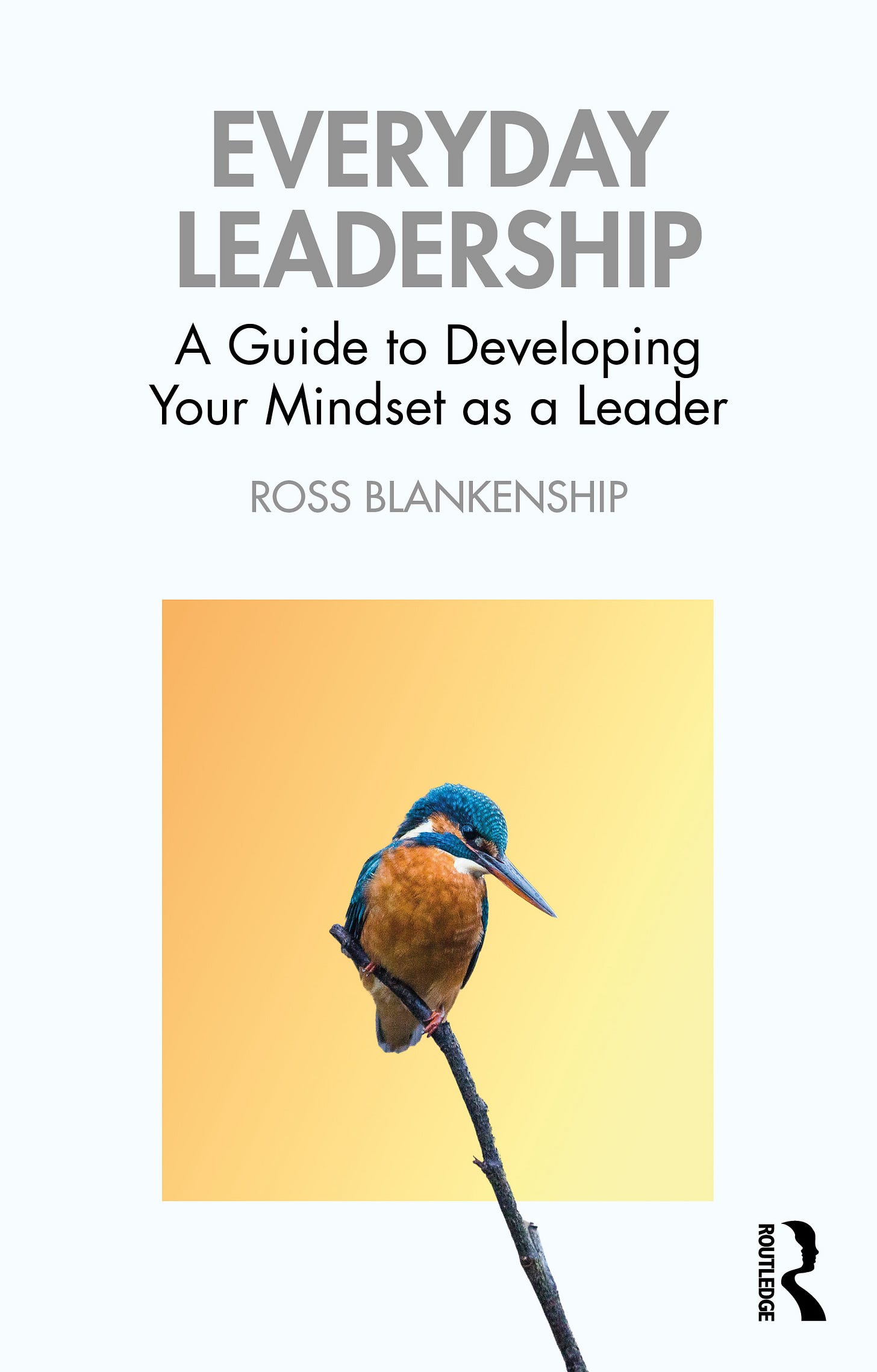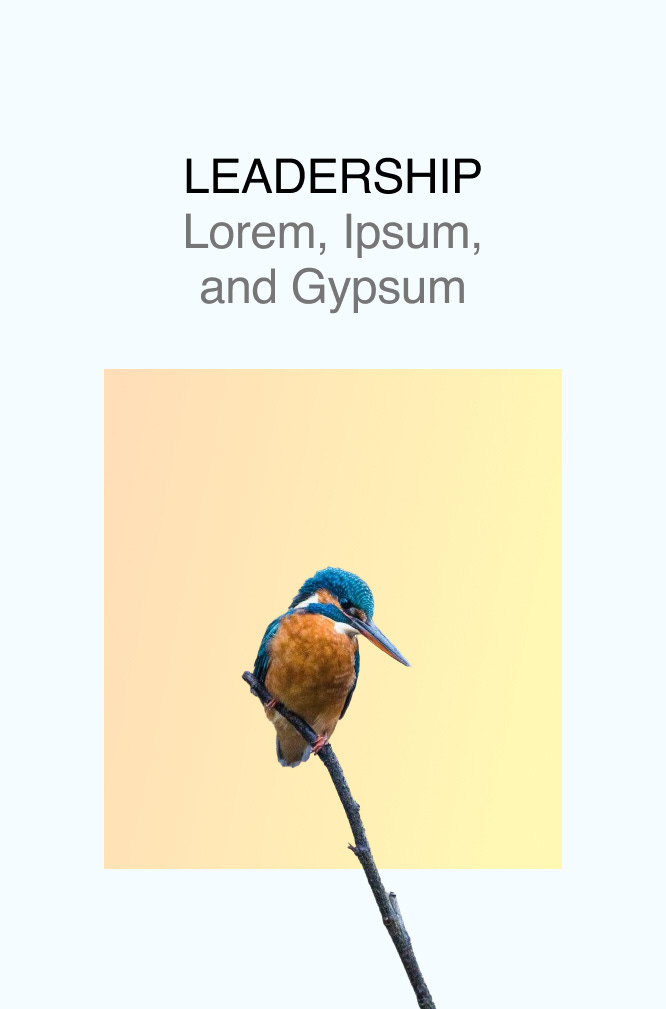I was in the middle of writing a post about how we think about our “core project,” pursuing our passions (for good and for ill), and this column I read in the NYTimes a month ago that I can’t stop thinking about. But then I got an email from my editorial assistant at Routledge saying that the cover had been accepted for Everyday Leadership, so I tossed all that to the side and decided I’d just share the cover instead.
The book has just entered the production phase (copy editing, typesetting, etc.) and is currently set to release in December. Stick around here for more info about the book, what early readers have said about it, where you can pre-order it, etc.
But for now, without further ado:
Let me tell you a story about this cover.
Routledge has some pretty strict design parameters that they work with, which leaves limited tools in the tool belt of the cover designer. That can make it hard to create a cover that will (hopefully) stand out. They offer about 40 different templates that you have to work with, and within those templates there are varying degrees of flexibility.
I reached out to a number of designers whose work I had found by researching book covers I liked, illustrations from magazines and websites that I like, and by generally wasting time trying to find new cover designers on the internet instead of writing. The price range for this service is notable, from a few hundred dollars to $25k+ depending on things like format, rights, and expected circulation.
Look, I believe there is a life for this book, but book writing is notoriously unprofitable, so I wasn’t ready to bet the farm on the cover design.
Instead, I decided to work with an illustrator who was affordable, who’s work I found compelling, and who seemed to have a lot of range. I also liked that he offered multiple sketches/concepts from which we would pick a direction and develop.
I don’t know what I was expecting to see with the sketches, and I had intentionally not given much direction because my general feeling about working with creative people is to just let them go create.
But when I scanned through the initial ideas I just wasn’t excited. Maybe we could have gotten there, but I suppose I was hoping to be seized by something. This is probably an unfair (and in retrospect largely unexamined) expectation to carry into this process, but in any case, that’s where I was.
Randomly, this all occurred on January 30th, which happened to be the day that Chris Dixon’s book Read Write Own was released and, though it is very abstract and a bit odd, I found the cover captivating.
Later that day, I took my daughters to swim practice and I ran into one of my oldest friends, Garrett Cummings. Garrett also happens to be a writer and a bibliophile, and I found the perfect audience for my Book Cover Feelings; the sketches that didn’t seize, this other random book that I thought had a cool cover, the fact that I was trying to get the cover designed while still unsure whether I could land the plane on finishing the manuscript, etc.
We chatted, swim practice ended, and went our separate ways.
Later that night I got an email from Garrett that said, in effect, you didn’t ask, I’m not a designer, I don’t know what your constraints are, and I don’t know what your book is really about, but here’s an idea.
This is what he sent me:
Needless to say, it got me.
I canceled the remainder of my contract with the illustrator, and Garrett took the reins. We went back and forth a bit over the months that followed, but ultimately landed on almost the exact design he sent me originally.
So there it is. Let me know what you think!
p.s. I put up a landing page for the book on Tuesday Advisors and my personal website rossblankenship.io that describe the book a bit and give glimpses of early endorsements. Take a look, send it to a friend, send it to the many thousands of your followers, you know, whatever.







